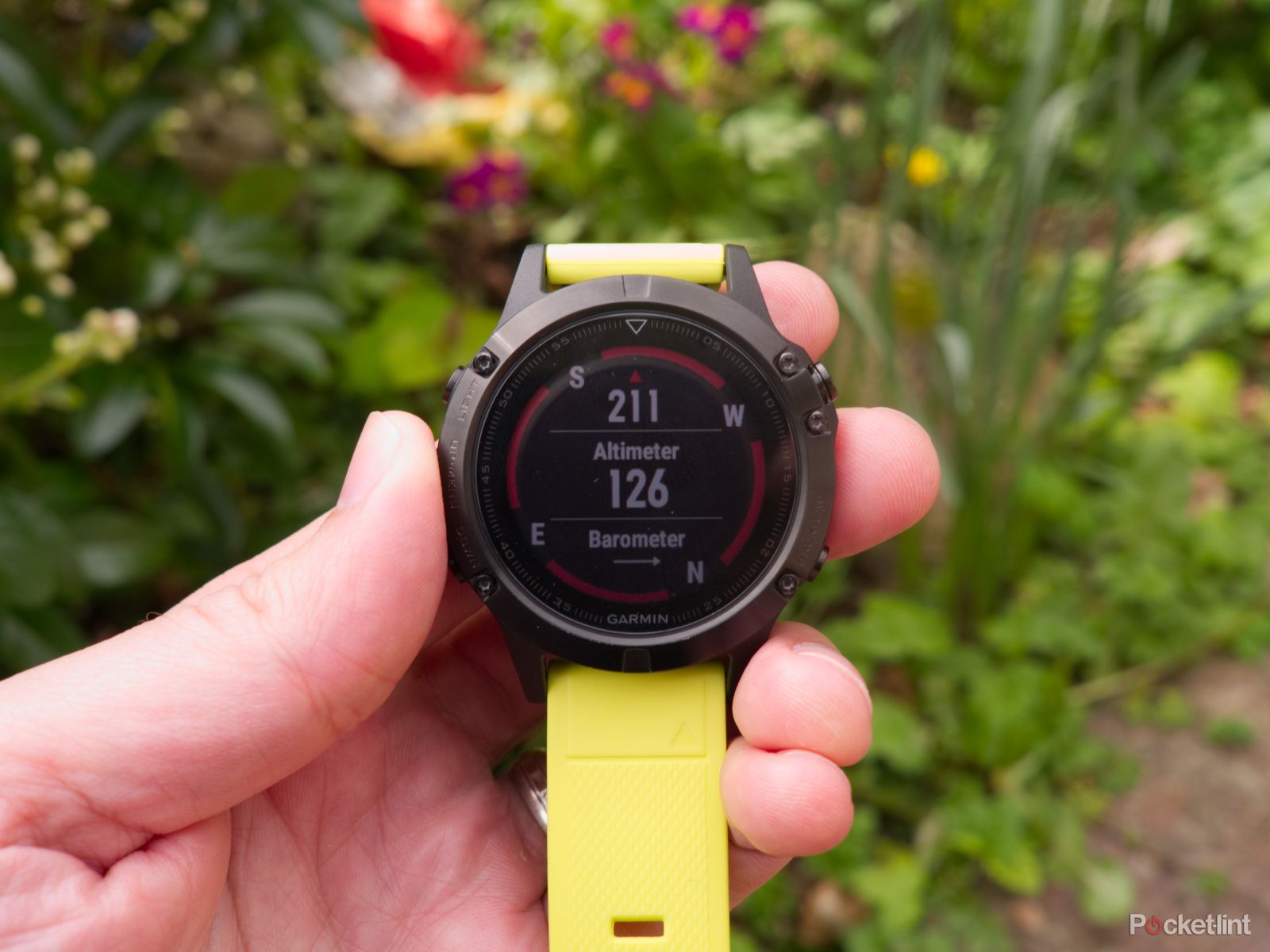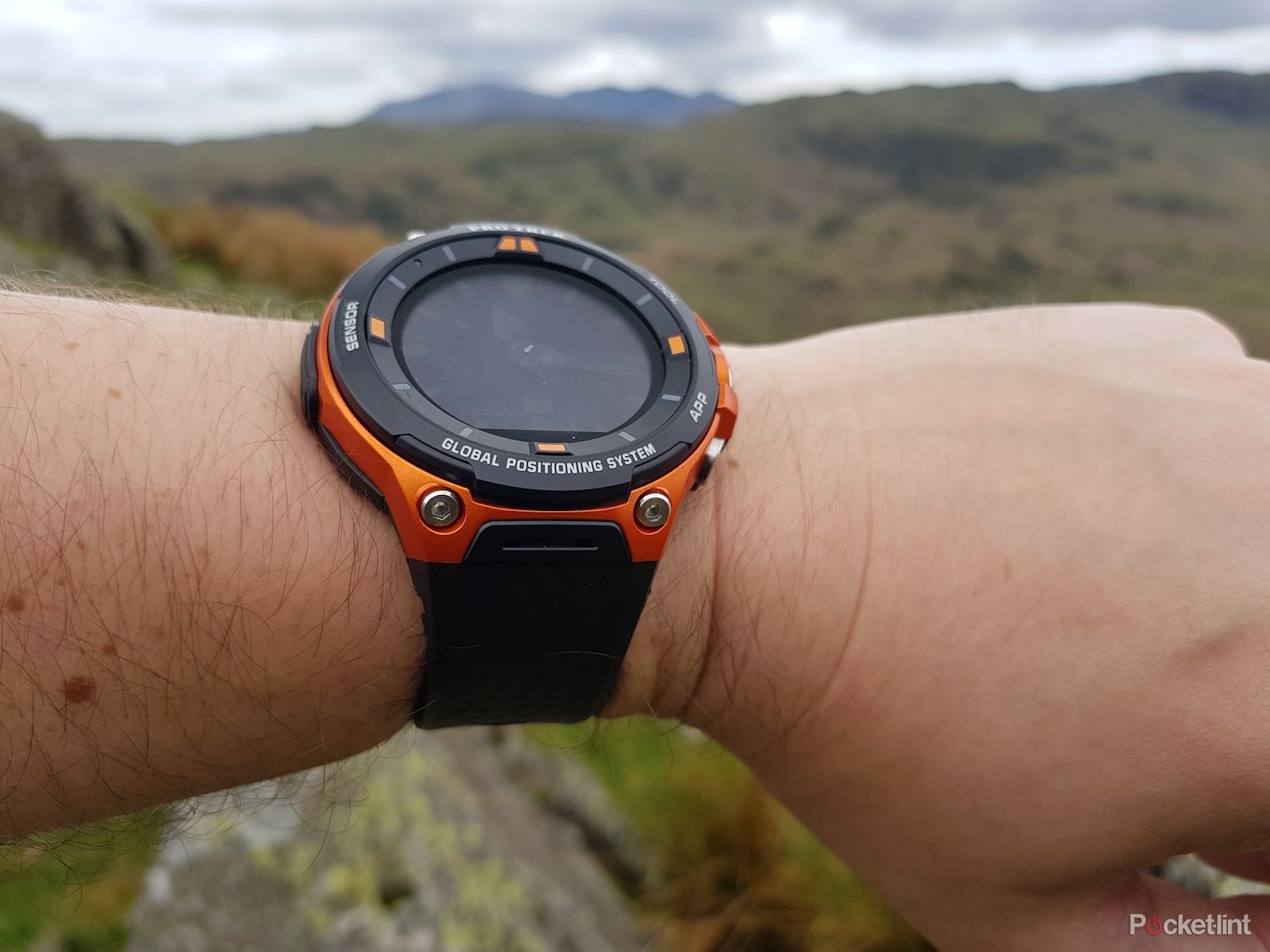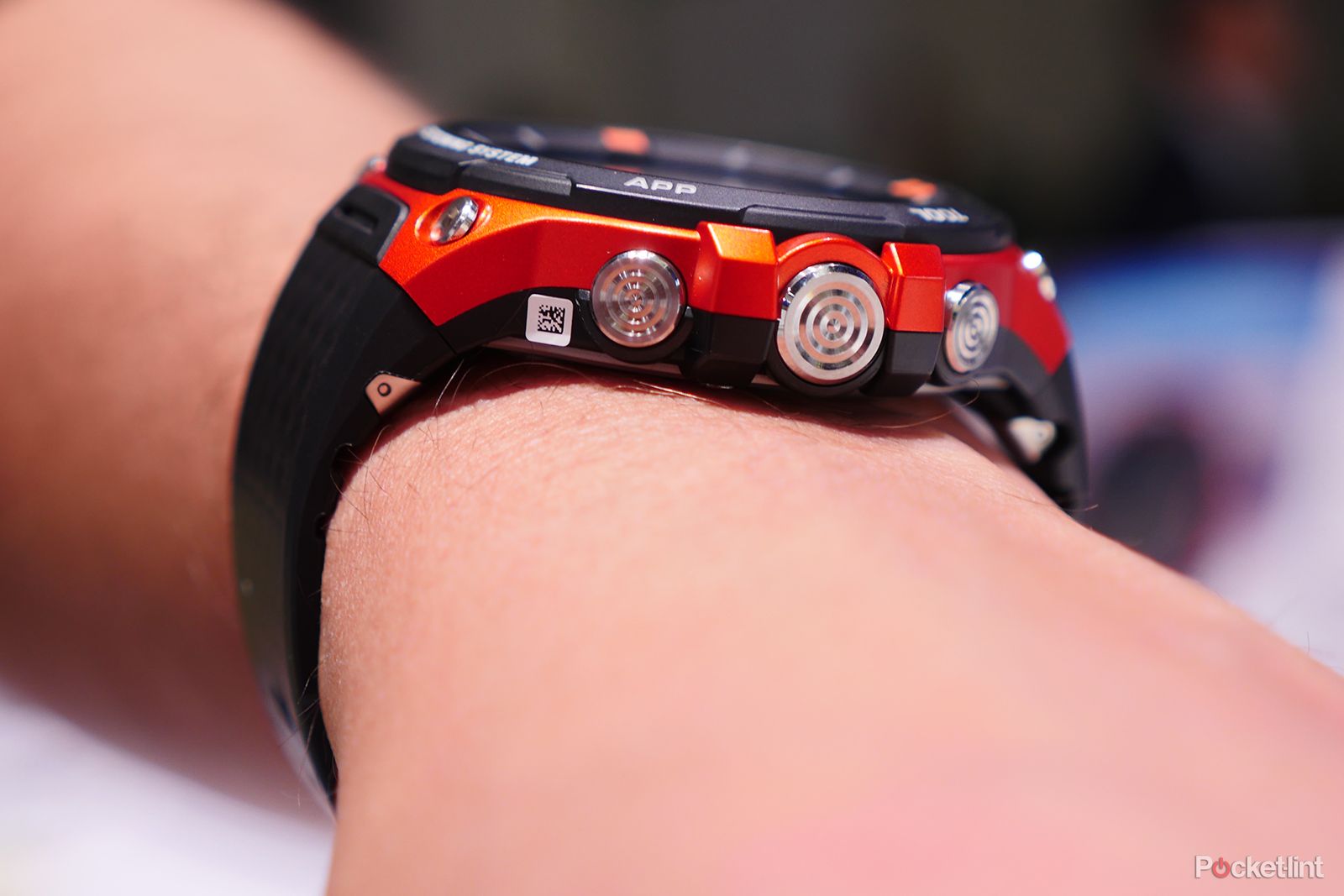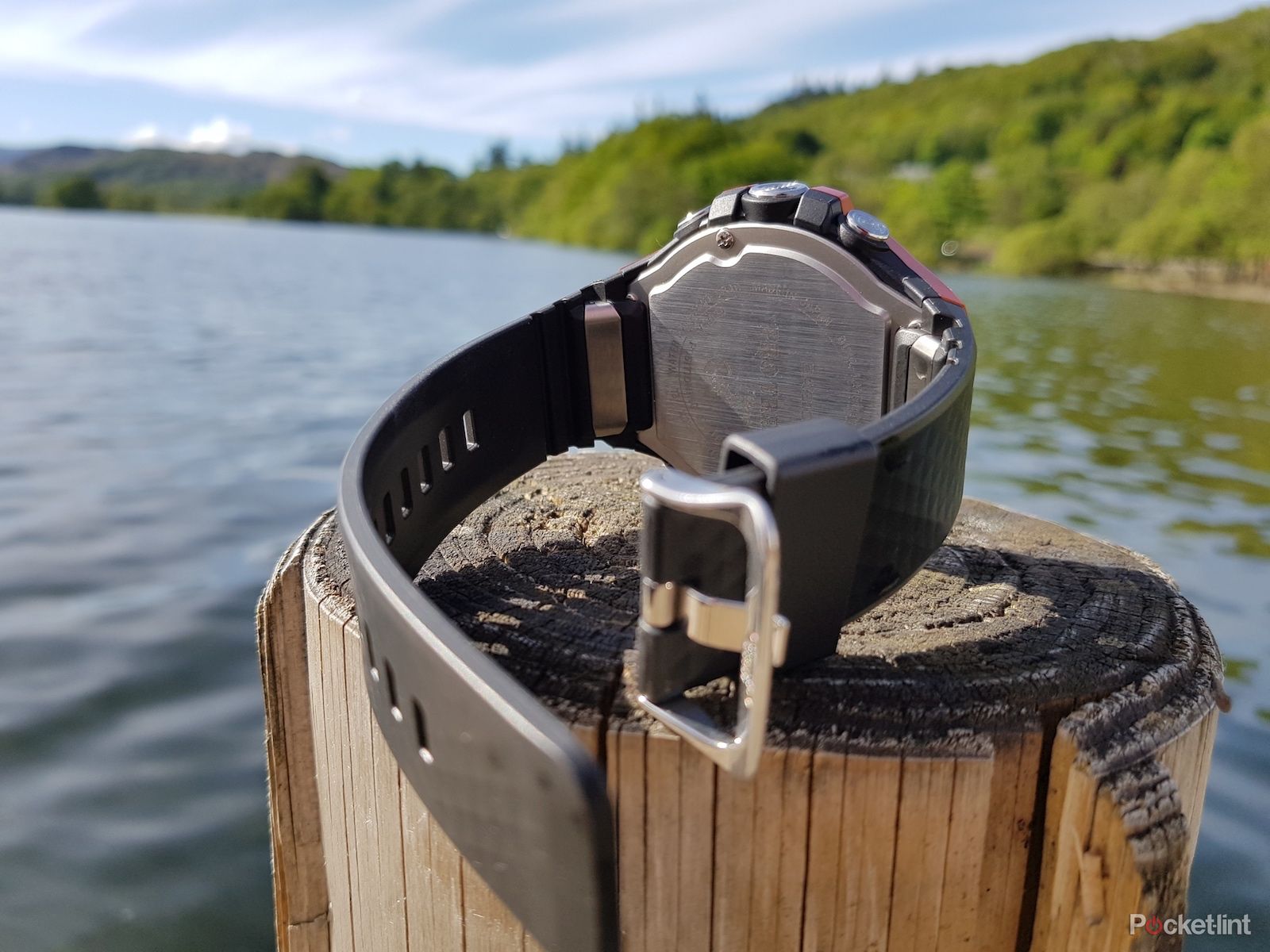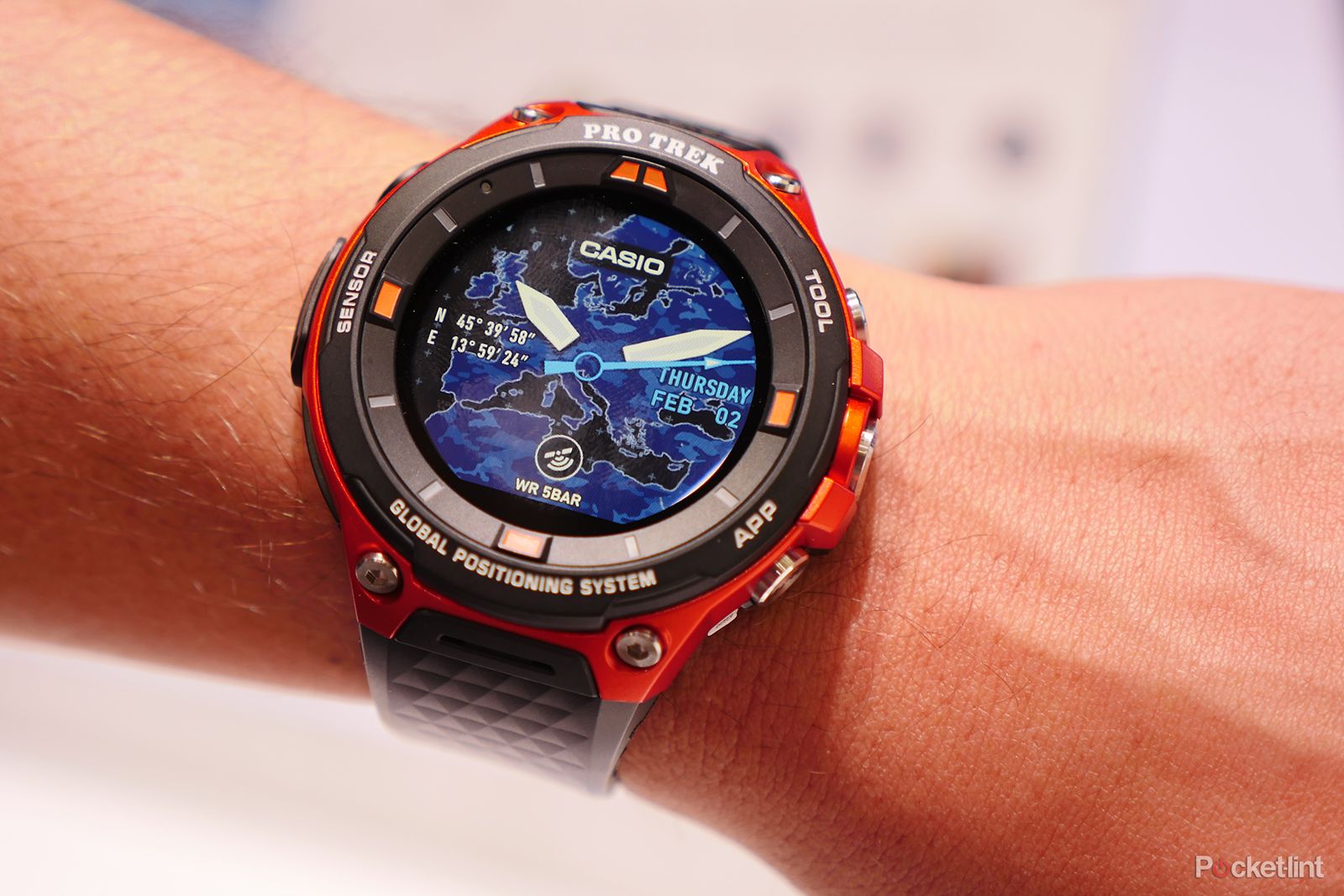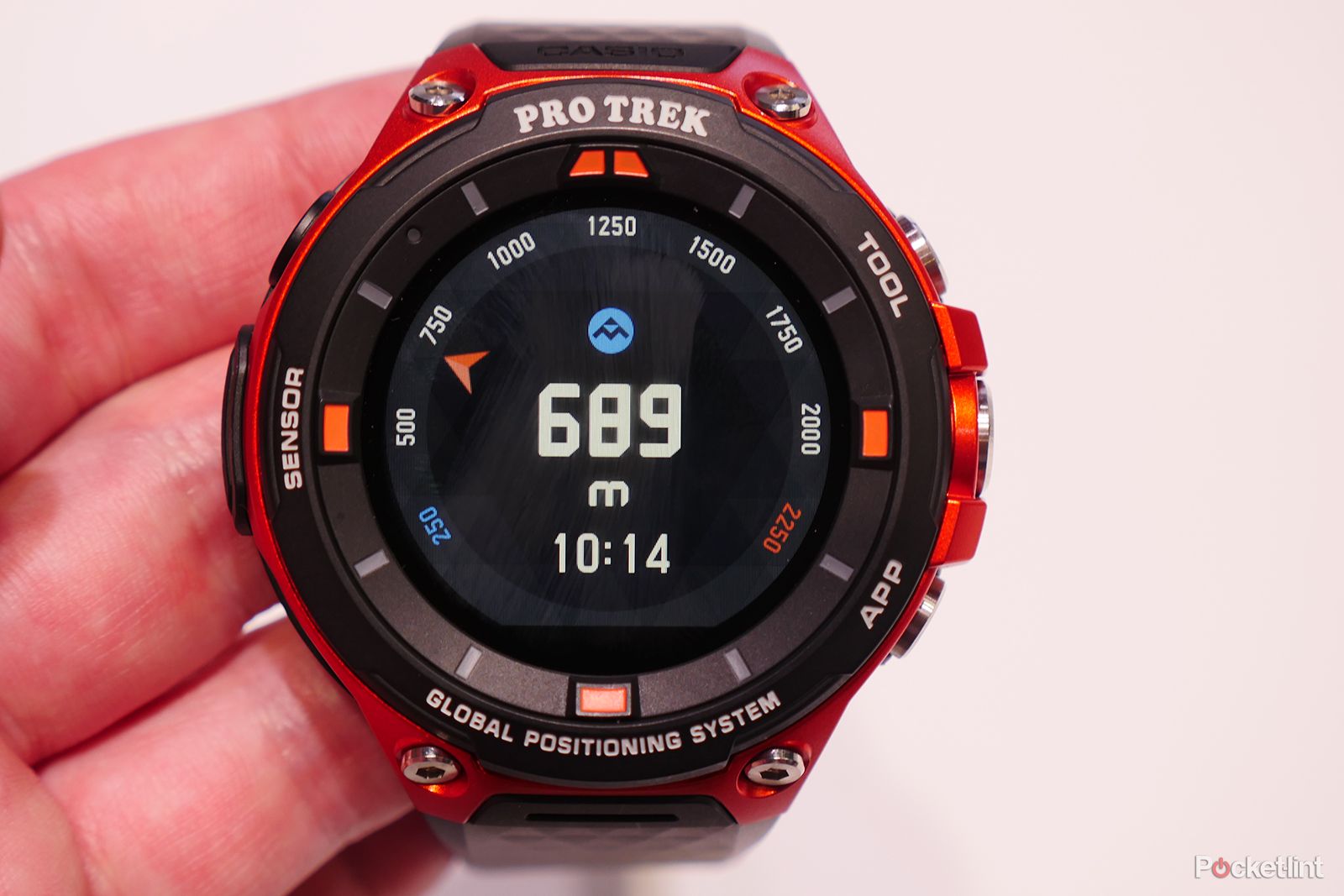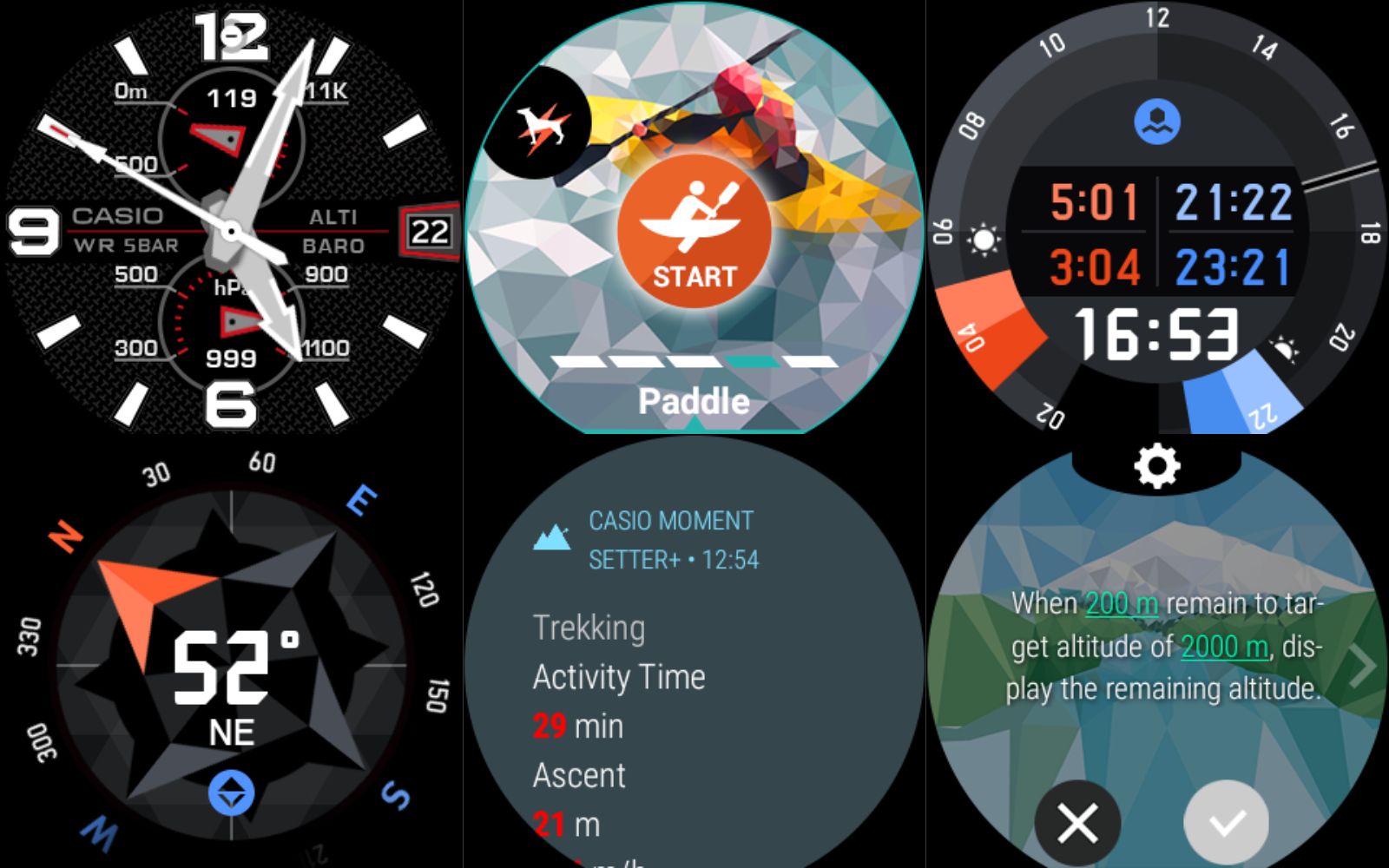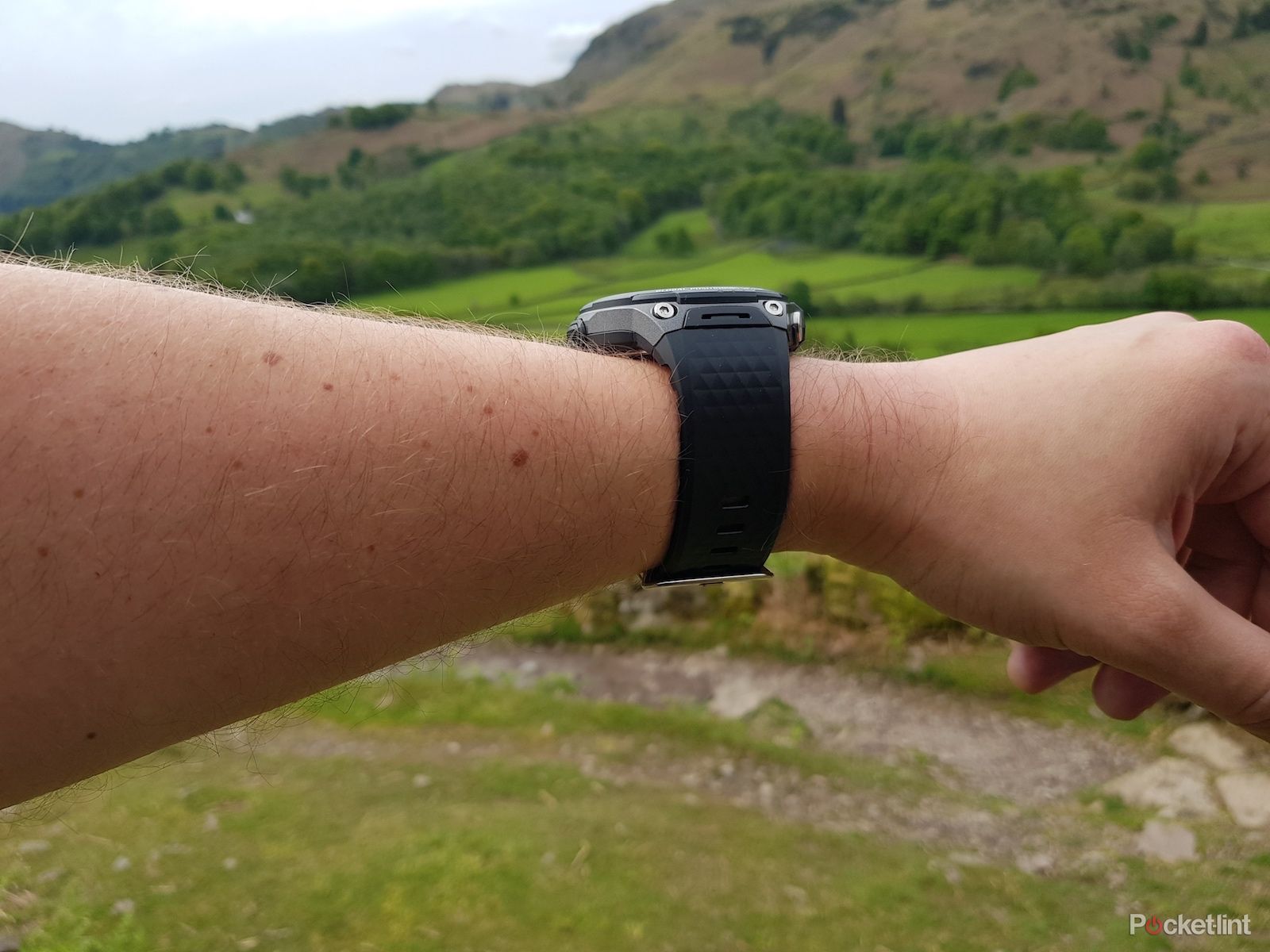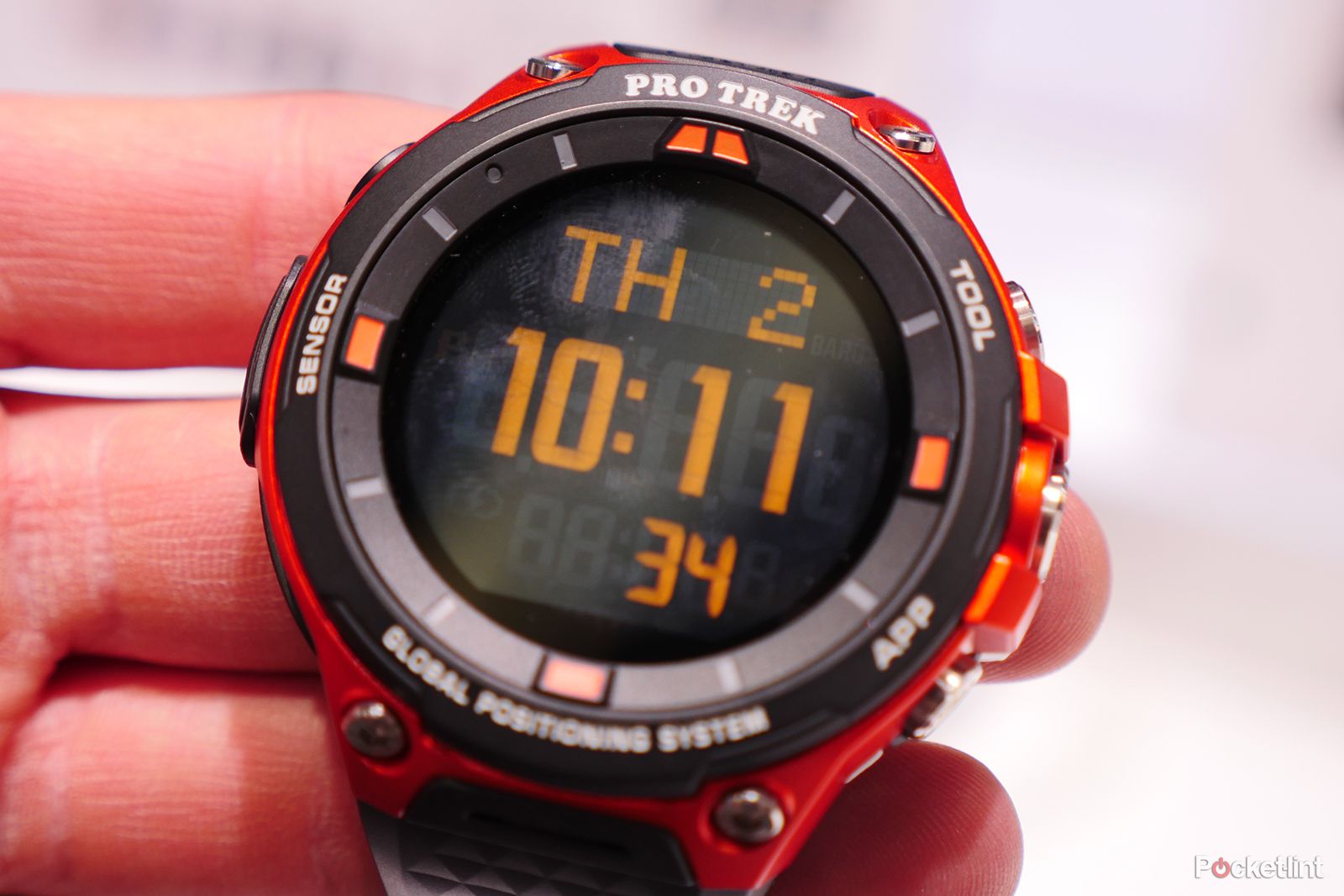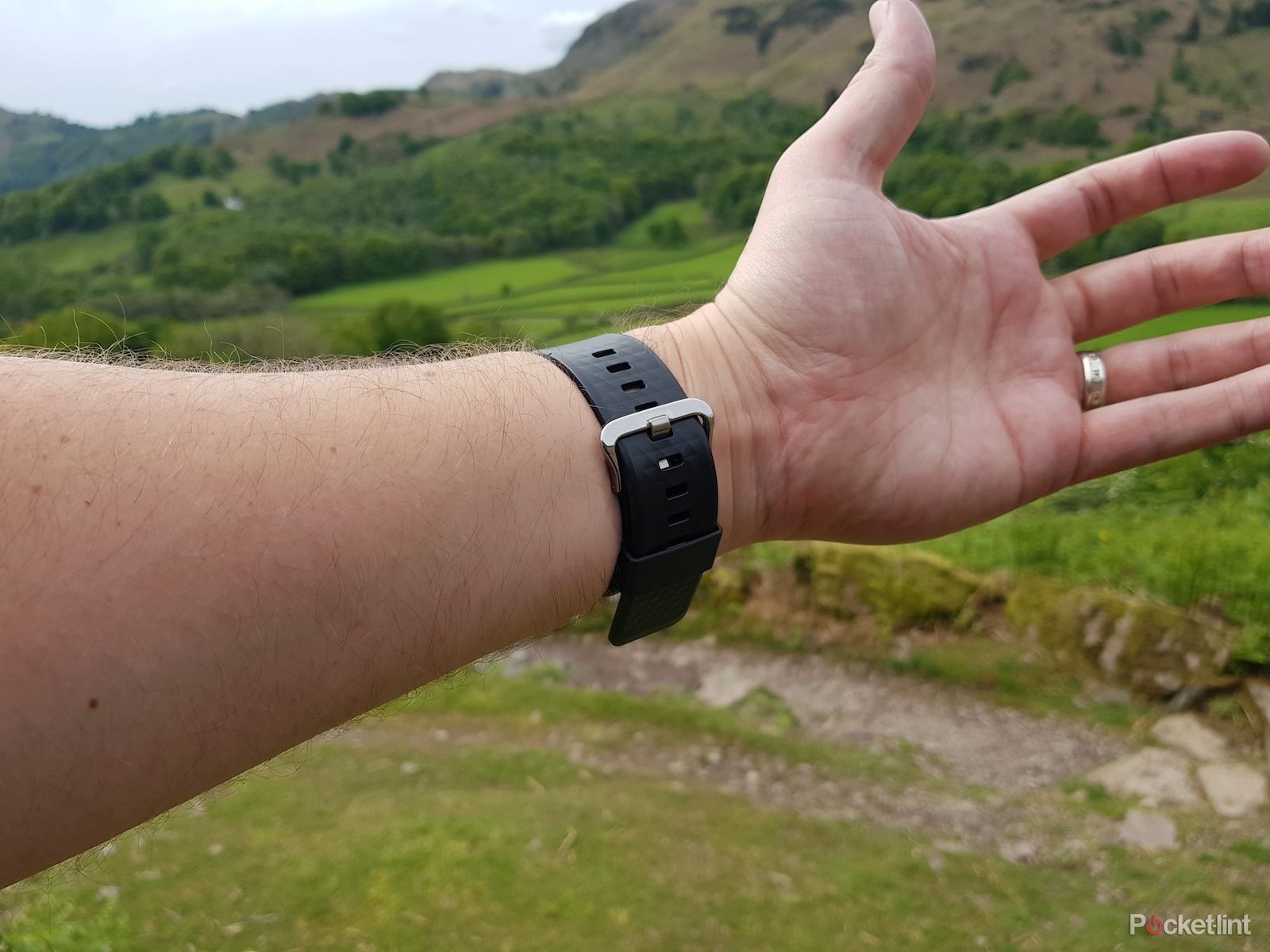Last year, Casio took the wraps off its first Android Wear watch aimed at active outdoors people: the WSD-F10. Although it never officially made its way over to the UK, the watch was clearly aimed to offer something that hadn't really existed before.
Our quick take
As an Android Wear watch, there's a lot to like about the Casio. It's fast, fluid, responsive and very feature-rich. In fact, it's easily one of the best performing Android Wear watches we've ever used.
From a sports tracking perspective, however, it's not perfect. The built-in software is detailed and works well when actively tracking an activity. But not being able to dig into statistics of recent activities once you've dismissed a notification card seems like an obvious flaw. There should be an easier way to see all previous activities off the bat, without digging into a third-party app. It's a good job that Android Wear means such apps exist to cater your experience.
While the F20's battery life is fine, we also suspect those wanting to take extreme challenges like the a coast-to-coast walk or the Three Peaks challenge won't want to rely on a watch that will last them a day or two at best. It would likely last one ascent and descent of the bigger mountains in the UK, but would need to be plugged in straight afterwards. That plus the so-so colour screen see the Casio WSD-F20 slight off the pulse (if you'll excuse the pun) when it comes to dedicated outdoor activity sportswatches.
Still, the WSD-F20's dual-layer screen technology is innovative and certainly makes a lasting impression. If you're not a runner, we can comfortably say this Casio is the best Android Wear watch designed for outdoor sports. The flip side of that is that Android Wear isn't necessarily the best platform designed for outdoor sports.
Alternative to consider
Garmin Fenix 5
There's no denying that the Fenix 5 is one of the best multisports trackers around. Its software is fantastic, and the companion app on the phone is even better. Its battery can last two weeks without needing to be charged, and the screen is easy to see most of the time. It might cost a little more, but it's a better all-rounder than anything running Android Wear.
Read the full article: Garmin Fenix 5 review
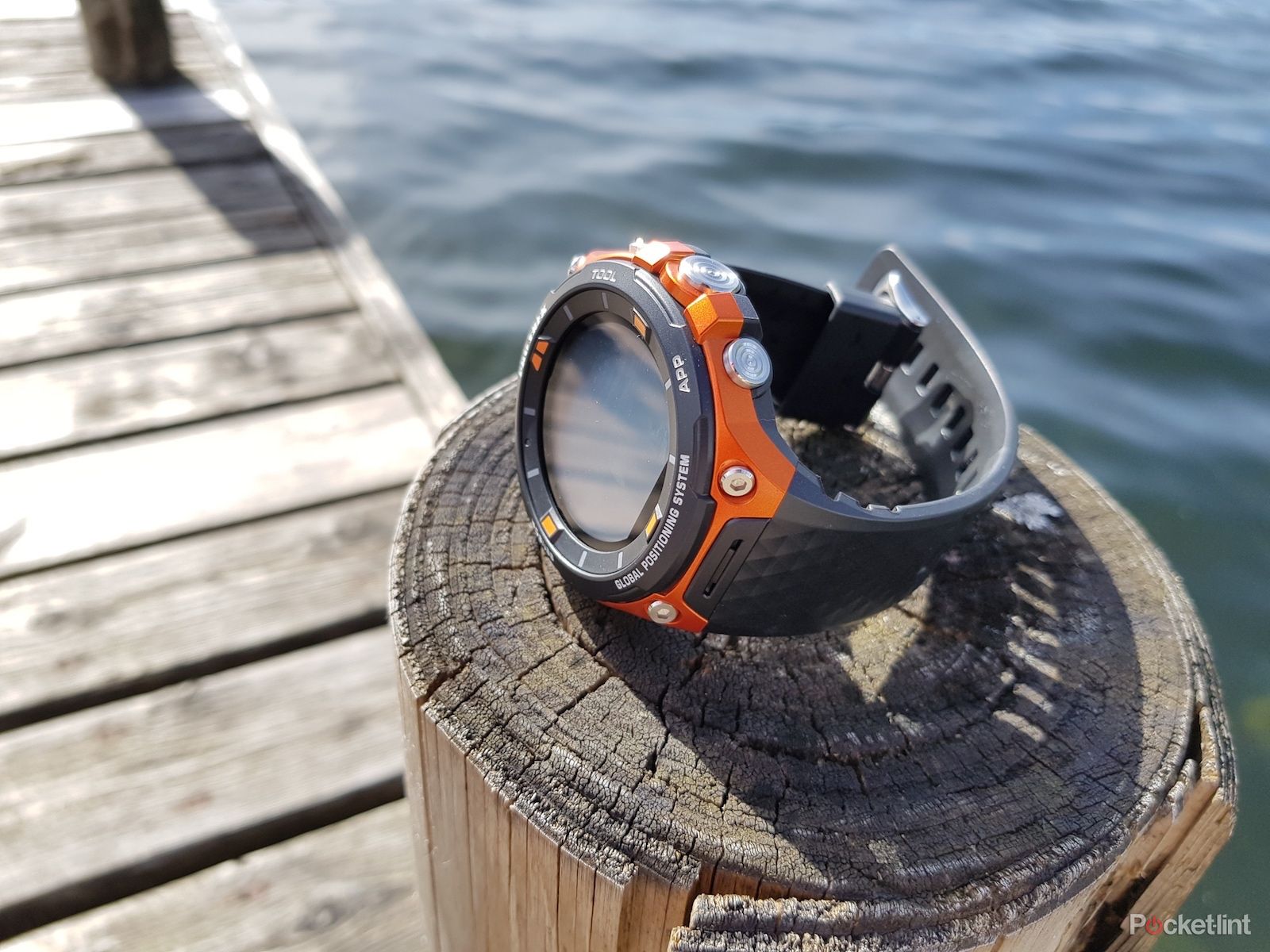
Casio WSD-F20 - 4.0 / 5
| FOR | AGAINST |
|---|---|
|
|
Casio WSD-F20
For 2017, it's time for the sequel: the WSD-F20. Running Android Wear 2.0, this new watch heads up a niche market that still has very little direct competition. Sure, there are plenty of sports watches aimed at active people, just most aren't in the Android Wear camp.
And the WDC-F20 seemingly does it all. Whether you're kayaking, hiking, or mountain biking, there's plenty on offer here to tempt you, alongside the usual array of Android Wear apps and connectivity.
Despite that, the question remains: is the WSD-F20 good enough at the all-important tracking side of things to tempt people away from "proper" sports watches? With watches from the likes of Garmin and Suunto, among others, it's a tough ask. So we set to the hills of the Lake District to see how the WSD-F20 answered its call of the wild.
Casio WSD-F20 review: Design
- 61.7 x 57.7 x 15.3mm; 92g
- MIL-STD-810G durability
- Water proof to 50 meters (5 bar)
There's no getting away from the size of this Casio. The WSD-F20 is big and chunky, just like the company's well-renowned G-Shock watches. It's big enough that it dwarfs even the likes of the Garmin Fenix 5, and the Fossil Q range. It's formidable.
Given the specifications and hardware features, however, this extra size makes sense. The form means there's space for the intriguing dual-layer display – which we'll come to in more detail later.
The watch is also built to high standards of durability. Specifically, it's been tested to US military standards and bares the MIL-STD-810 certification, with water resistance up to 5 bars of pressure, which equates to a depth of 50 meters beneath the waves.
The overall industrial and rugged look gives a sense that it is built like a tank. It gives you that reassurance that it's a serious watch, for serious outdoor activities.
The chunky plastic ring around the display is marked with indexes for the time, with splashes of orange (on the orange trim model) at the 12, 3, 6 and 9 o'clock positions. The outer edges of this frame are marked with brand names and various labels to indicate what the buttons and sensors do.
This hardy plastic frame protrudes from the screen, to protect it against drops and impacts, and sits on top of a sturdy metal base, held in place by exposed screws, finishing off that rugged look.
On the right edge of the case there are three large, round buttons. Again, parts of the frame protrude to protect these buttons. The middle button is the usual Android Wear home/apps screen button, which sits in between a Tool button and App button.
The left edge plays home to an air pressure sensor and the proprietary magnetic single-pin charging port. Think of it almost as a single-pin MagSafe charger, as you'd find on a MacBook. This magnet is strong enough to hold onto the watch, although it will detach with a quick, sharp tug.
Unlike most sports-focused watches, there is no heart-rate monitor in the WSD-F20. The underside of the case is a flat sheet of brushed metal. Given that it's already 15.3mm thick, we hate to think how chunky it would be with the added sensor protruding underneath. Maybe that'll be the FD30's thing?
Despite appearances, we had no real issues wearing the watch; it was pretty comfortable throughout our hilltop excursions. If there's one area that we think needs improving, it's the strap: it's not easily detached, so isn't designed to come off quickly for easy swapping with other straps; also the material is quite stiff and the holes for the clasp are spaced a little too far apart, which meant we couldn't find a perfect fit.
Casio WSD-F20 review: Screen(s)
- Dual-layer display
- Monochrome and colour screens
- 320 x 300 pixel LCD
Similar to its predecessor, the WSD-F20 features two screens. It's a really interesting concept, and one which has definite benefits, specifically in regards to the battery life.
One layer is a regular colour LCD display, the other is a monochrome e-ink panel. The latter panel works much the same as the kinds of screens we've seen on devices like the Garmin Fenix 5 and Pebble smartwatches. It doesn't use a backlight, and has a low refresh rate, so it doesn't consume a lot of battery power. It's also relatively easy to see most of the time (assuming there's enough ambient light), and its constant display of the time very clear.
The main colour display is fairly standard: it's bright, colourful and standard resolution for a sports or smart watch. That means it's sharp enough viewed at arm's length to ensure details on the display aren't fuzzy or pixelated.
There is a black cutout "flat tyre" at the bottom though – an area where the display cannot display – which is always a disappointment to see in any round watch face. Although, it must be said, with Casio's bespoke watch faces and the size of the watch frame combined, it's not as noticeable as on other, more slimline and fashion-focused smartwatches.
The colour display's main issue is that viewing angles aren't very good. Unless you're looking at it directly at the right angle, the screen's contrast gets too low, similar to old laptop screens that needed to be just at the right angle in order to view properly. Add that its colour saturation and contrast aren't particularly high at the best of times, and the F20's screen feels like a pretty lacklustre colour offering that's not very easy to see outdoors when in bright daylight.
Casio WSD-F20 review: Tracking and software
- GPS, GLONASS + Michibiki
- Activity app for tracking
- Android Wear 2.0
- Moments Setter app
Apart from the missing heart-rate sensor, the Casio has virtually everything you need to track your outdoor jaunts. There's a pressure sensor on the side to accurately measure air pressure and altitude, which seemed accurate enough once set up. If you're ever up in the mountains and need to see how high you've climbed, there aren't many watches as capable as the new Casio.
To start tracking, simply launch the Android Wear apps screen, choose the Activity app, then swipe across to the relevant activity. We tested it when kayaking on a lake and when hiking up to the top of Helm Crag. The information displayed on screen altered depending on the different activity, which shows the watch is sensitive.
Using hiking as an example, there's the usual distance and time alongside altitude, time, goal and pace. A swipe across the screen reveals ascent and decent stats, or a map.
One of the better features of this tracking is that it can carry on in the background. So you can go back to the watch face, look through the useful default tool widgets – there's a full-screen compass, altimeter, barometer, and a sunrise/sunset tool - by the press of the Tools button.
We tested the Casio's route tracking alongside a Garmin Fenix 5 and found that it tracked just as reliably.
It was only after stopping the activity we tracked using Casio's built-in Activity app that we came across our first issue: once an activity is stopped, that's it. There's no screen giving a summary of what you've just done, no hints and tips about how much recovery time you need, no achievements. Nothing.
The only way to see a basic summary was by swiping up the notification cards from the watch face, but then once that's dismissed, it's all gone. Bizarrely, there's no companion app on smartphone either, so none of this data is saved anywhere once you've dismissed that notification card.
There is a workaround, in that you could just download and use any of the third-party fitness tracking apps from the Google Play Store. But then again, in a watch that's all about outdoor activity tracking, Casio's built-in offering should be thorough and useful enough that you don't want to download anything extra.
It's worth noting - as if the heart-rate sensor not being there wasn't a big enough clue - this is not a running watch. Casio's Activity app doesn't include a running mode. Again, you could download Strava – as an example – but you won't get heart rate details without an external sensor.
There's also the Moments Setter app which you customise to show you specific updates at certain points. For instance, if you're aiming to hit 2000m altitude, it can show you the remaining altitude from 200m away. Other examples for hiking include showing an altitude graph every time you go up 200m, or displaying a map every 200m. For different activities, the options change.
One of the best uses of the watch – specifically for hiking – is a third-party app called ViewRanger. It's one of the most well regarded hiking and mapping services available. If you happen to be going up a planned route, like one of the Wainwrights, you can normally find it on ViewRanger and have directions and details pushed to the FD20. You can even download detailed maps.
Casio WSD-F20 review: Performance and battery life
- 1-2 days battery per charge
- Up to 9 hours high-accuracy GPS tracking
- Up to 25 hours battery-saver tracking
- Magnetic charger
Because of the dual-layer screen, and various settings, the battery performance of the F20 can be something of a Jekyll and Hyde act. Using it like a regular Android Wear watch with the always-on display setting yields similar results to most other Android Wear watches. That's to say, you'll make it through a day on a full charge, probably more.
With the always-on display switched off in the settings, the Casio watch relies more on secondary monochrome screen, only lighting up the main display when you raise it. In this mode, we got it through two days fairly comfortably. Starting the day at 100 per cent, we got to close to midnight with between 50-60 per cent left over most days.
The big benefit of using the secondary layer of screen comes when tracking an activity in the background. With the screen automatically turning off in favour of the monochrome screen, you can get up to 9 hours of tracking with the watch set to prioritise location accuracy over battery performance. Casio claims you can get 25 hours with it set to prioritise the battery.
In our real-life usage, we found the F20 lasted somewhere close to the spec sheet's claims. Two and half hours of tracking a hike used around 35 per cent of the battery. Likewise, a half-an-hour run used less than 10 per cent. In both of these activities, we were checking the progress fairly regularly.
As for overall performance, in terms of speed and fluidity, this Casio has been one of the best watches we've used running Android Wear. Switching between screens, scrolling through the apps list, loading apps, and switching between the Tools was swift and lag-free. There's not been any stutter whatsoever.
Casio WSD-F20
To recap
As an Android Wear watch, there's a lot to like about the Casio. It's fast, fluid, responsive and very feature-rich, but still feels like it's missing something. Not being able to dig in to your statistics and summary of your last exercise once you've dismissed the notification card seems like an obvious flaw.

